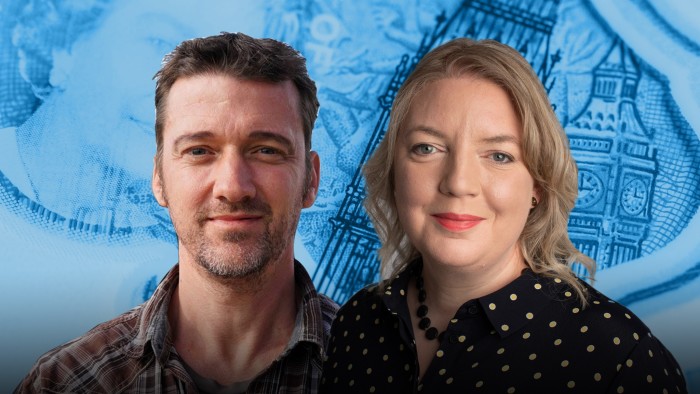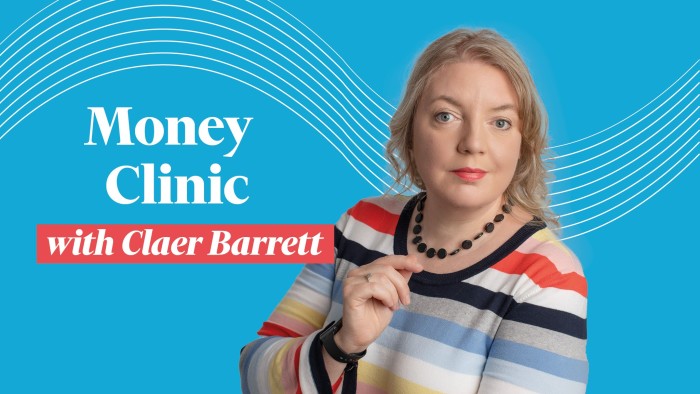Mr Money Mustache: How I ‘retired’, aged 30

Simply sign up to the Investments myFT Digest -- delivered directly to your inbox.
The lockdown experience enabled millions of people to save more of their disposable income and invest it in the stock market. However, for US blogger Pete Adeney, better known as Mr Money Mustache, this is a lifestyle choice that he has been advocating for decades.
The 46-year-old investor started his website and blog after he “retired” from his job as a software engineer at the tender age of 30. It has cult status among followers of the Fire movement (Financial Independence Retire Early), who budget carefully to invest a greater proportion of their take-home pay in low-cost index funds, with the hope of “making work optional”.
Adeney says the “forced savings” of lockdown led many to question how much they were spending.
“Spending is the part that’s within our control and it’s something you can change — starting today,” he tells presenter Claer Barrett on this week’s episode of the Money Clinic podcast.
Money Clinic meets Mr Money Mustache

Claer Barrett interviews the influential blogger and proponent of Fire — Financial Independence Retire Early. Listen here
“The first thing, if you’re not already doing it, is to start tracking your spending and figure out where the money is going. Getting more conscious about your spending choices means you can keep a lot more of the money for yourself and invest it.”
On his blog, Adeney outlines the concept of a “Fire number” — the amount you would need to have invested to live off for the rest of your life. This is calculated as 25 times your annual expenditure, so the less you can subsist on, the easier it will be to hit this target.
“If you have like 20,000 annual spending, whether it’s pounds or dollars, multiply that by 25 and that’s 500,000 that you’d need in investments, very roughly. And if you have a 40,000 spending rate then you’d need a million invested,” he says.
This assumes that no more than 4 per cent of the pot is withdrawn every year, known as the 4 per cent rule.
Fire devotees — including this week’s podcast guests Rory and Amy — aim to save 50 per cent of their income and invest it in low-cost tracker funds and ETFs, avoiding expensive investment fees.
Adeney has plenty of tips for the British couple, who are in their early thirties and work as secondary schoolteachers in Manchester.
“I personally can’t imagine going in at age 68 and taking a register in the morning,” says Amy. The couple started their Fire journey under lockdown, after realising how much of their disposable income could potentially be saved and invested.
On the podcast, the couple reveal how they slashed the cost of their monthly food shop from £800 to £100 a month using Olio, a food-sharing app. Any money they make from side hustles, including tutoring and teaching bridge online, is paid straight into their stocks and shares Isa to avoid the temptation of “lifestyle creep”.
With global stock markets nudging all-time highs, some may question the logic of investing an entire portfolio in passive funds, but Adeney is sticking to his strategy.
“Yeah, you’ll make slightly less if you buy in at these higher price earnings ratios, but it’s still going to be the best game around, like it’s the best way to invest,” he says. “You can’t guess which companies are going to outperform in the long run. And even worse, you absolutely cannot guess when there’s going to be a stock market crash and when it is the right time to buy in. That’s kind of a proven losing strategy.”
Accepting that today’s investors need to be prepared for markets to fluctuate, Adeney urged them to focus on the long-term performance.
“As fluctuations continue over the time and you continue to invest, you get the average price as time goes on,” he adds. “Find a graph that includes [the impact of] dividends being reinvested, because dividends are a key part of owning companies.”
Speaking from his Colorado home, Adeney stresses that “retirement” means different things for different people. For some, it could be saving enough to obtain a greater work/life balance by switching to part-time work, or choosing a career that is more rewarding but lower paid.
Although he is no longer a landlord, he has supplemented his income in the past by renting out property, and his DIY skills are so well-honed he can earn money as a handyman if he needs to.
New FT Live event

FT’s Future of Work event series is back this October. Join Facebook, LinkedIn, AstraZeneca, Nasa, and more as they explore key themes such as omnichannel workplaces, the impact of AI on jobs, privacy and security issues in distributed workforces. To book tickets, visit here
For him, the secret of Fire is that he’s able to live a simpler life spending more time doing meaningful activities he really enjoys — many of which involve his teenage son.
“Traditionally they teach us to save like five or 10 or maybe 15 per cent of our income, and that does work, but that’s what gets you to a retirement age of around 65 years old,” he says. “That was depressing to me because I’m still far from 65 and, oh my goodness, I can’t believe how much I am glad not to be in an office job even now at 46 years old.”
To hear the full episode, follow the link above, or search for Money Clinic wherever you get your podcasts.
Comments